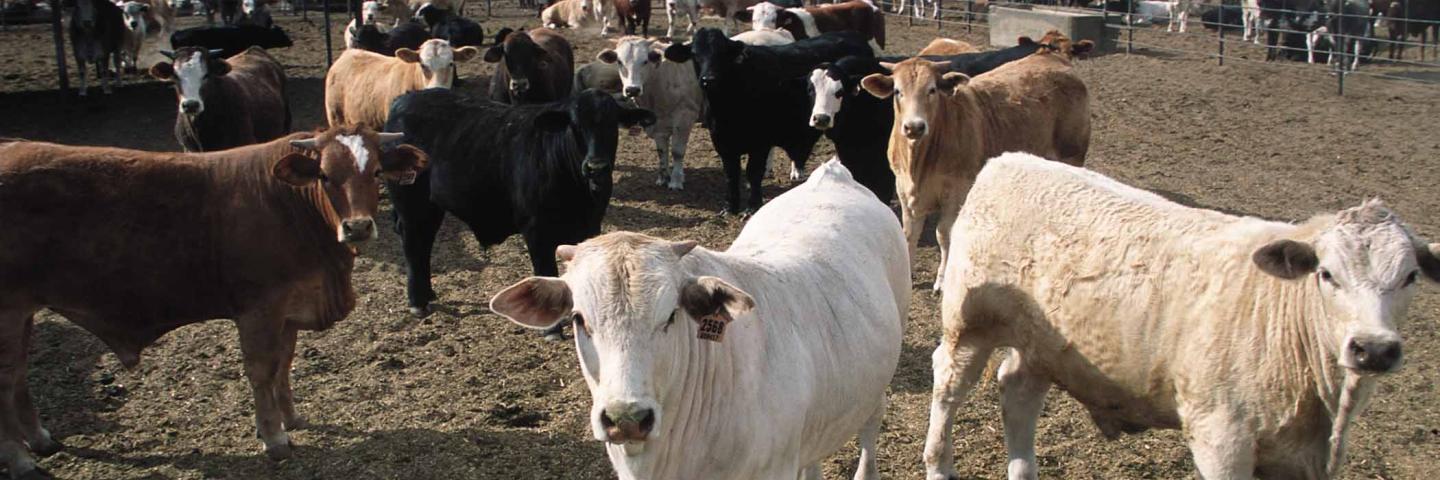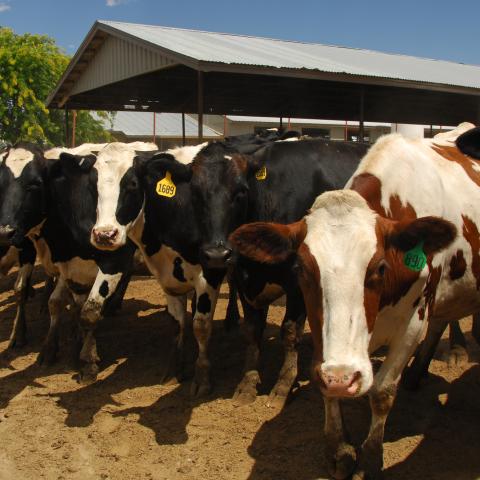
Managing waste products is a necessary activity of our existence as a society. How well this job is accomplished is reflected in the quality of the surroundings in which we live.
Manure Management
Managing waste products is a necessary activity of our existence as a society. How well this job is accomplished is reflected in the quality of the surroundings in which we live. Water, soil, vegetation, air, fish, animals, and humans, literally all natural things are the resources of our planet that need to be considered when deciding what to do with wastes generated by human activities. In the past, waste management needs were not so critical. Today, the growing world population demands more and more products, which results in more and more waste by-products that must be managed.
The agricultural industry, livestock production in particular, is a producer of waste materials that need management. These wastes include manure from a large number of different animals, wastewater from sanitizing operation, unused pesticide mixes and pesticide containers, and residue from food processing operations. Wastewater and sludge from municipal treatment plants, which are often applied on agricultural land, must also be managed.
Farmers and ranchers around the world have managed excess agricultural residue since they began production for the marketplace. The lessons learned from the beginning are still applied today. The character of agriculture has changed markedly in the last few decades. Herd sizes have been increased to meet demands for animal products. Large equipment and a broad array of agrichemicals are now used to increase production. The rapidly expanding population, along with increased consumption of animal products creates a higher awareness and a higher level of need for waste management.
The job of assisting agricultural producers to manage wastes begins with helping them recognize the need to improve their waste management system. The challenge of helping these producers recognize their needs is shared by many government, university, and private organizations. The conservation plan and comprehensive nutrient management plan (CNMP), as a subset, is the producer’s guide for managing and maintaining the resource base. It is developed following the planning procedures described in the Natural Resources Conservation Service (NRCS) National Planning Manual. Planning is conducted using several references, one of which is the Field Office Technical Guide (FOTG), which provides guidelines for addressing water, soil, plant, animal, and air resource concerns.
This Agricultural Waste Management Field Handbook (AWMFH) provides specific guidance for planning, designing, and managing systems where agricultural wastes are involved. It can help the professional planner/designer assist agricultural producers in organizing a comprehensive plan that results in the integration of waste management into overall farm operations. Material in this handbook covers a wide range of activities from incorporating available manure nutrients into crop nutrient budgets to proper disposal of waste materials that do not lend themselves to resource recycling. All activities must be done in conjunction with good environmental practices and in compliance with NRCS standards and specifications as outlined by the CNMP. The CNMP, when completed, becomes part of the overall conservation plan. It provides guidance to producers as well as others who work them such as engineering consultants, crop advisors and regulators. The more people who are aware of the variations and complexities of managing agricultural waste, the more effective and practical the plans and practices utilized will be.
Animal Waste Management (AWM) is a planning/design tool for animal feeding operations that can be used to estimate the production of manure, bedding, and process water and determines the size of storage/treatment facilities. The procedures and calculations used in AWM are based on the USDA-NRCS Agricultural Waste Management Field Handbook.
The AWM has been upgraded with the capability to evaluate existing facilities. The results from the evaluation are incorporated into the design processes for new facilities. The user can design the new facility either for the “Additional” waste not handled by the existing facility, or for the “Total” waste flowing into the structure.
The evaluation process involves the user entering the basic dimensions of an existing storage facility along with other parameters such as herd size, local climatic condition (monthly rainfall), and details about the additions such as bedding, wash water and flush water. With these inputs the system estimates the total waste flowing into the structure identified in the management train for the selected storage period and compares it to the available storage volume. It then presents an on-screen color coded report (red for inadequate and the green for the adequate structure.) This report helps recognize if the structure is adequately designed or not easily and quickly. The user can also print a hardcopy of this report.
The AWM process of evaluating existing structures can help producers in deciding if they would like to go for the “No Discharge” declaration within the EPA 2008 CAFO rule. The facility design for the “Total” waste or for the “Additional” waste not handled by the existing structure is easily done by selecting the appropriate radio button on the AWM design screen. In addition, several improvements and bug fixes, listed below, have been incorporated to further improve AWM functions and capabilities.
Standard AWM Features:
- Provides manure characteristics for eight animal types with the ability to modify these characteristics and add animal types as necessary.
- Accounts for bedding, wastewater, flush water and other additions to the waste stream.
- Tracks liquid and solid wastes produced in multiple locations through multiple waste streams.
- Develops separation, storage, and treatment components for liquid and solid wastes that are defined as a 'Management Train'.
- Estimate's precipitation and runoff entering the 'Management Train'.
- Sizes storage facilities using a defined storage period or drawdown dates specified by the user.
- Develops a monthly water and waste budget for each terminal treatment/storage component.
- Provides a calculator for converting units and performing computations.
- Produces a gross nutrient balance from target yields and crop acreage specified for crops listed in the crop database.
- Provides a schematic drawing for each terminal treatment/storage component.
- Generates a standard or custom report to document the system design.
Safety must be a primary consideration in managing animal waste. It must be considered during planning, siting, and designing of agricultural waste management system (AWMS) components, as well as during the actual operation of handling wastes.
Additional Information
Nutrient Management
Nutrient Management is the management of nutrients and soil amendments to maximize their economic benefit while minimizing their environmental impact.
Learn More

